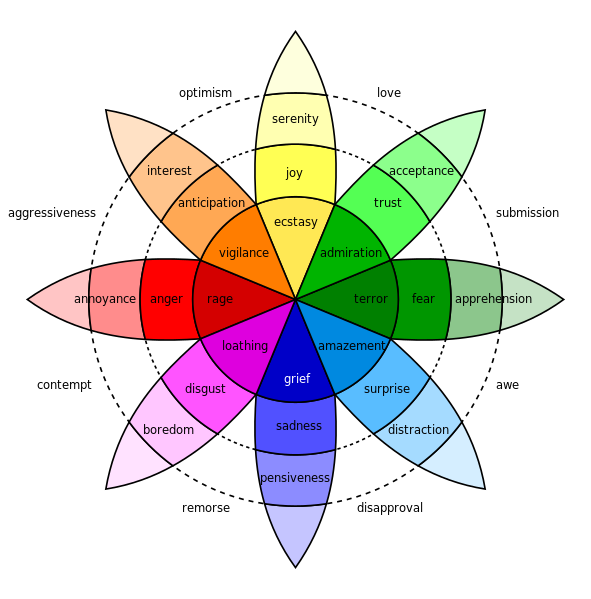
Plutchik’s Wheel of Emotions, above, an extremely useful tool, may be found at:
http://upload.wikimedia.org/wikipedia/commons/thumb/c/ce/Plutchik-wheel.svg/591px-Plutchik-wheel.svg.png
Anger and loathing are emotions that seldom, if ever, play well in the courtoom. I believe that this is, at least in part, because these emotions are second- level feelings that do not reveal the authentic underlying feelings and are, therefore, perceived as disingenuous or offputting.
Anger, for instance, is often a reaction to pain or grief. A party who manifests anger and loathing and other negative emotions in the courtroom does so at the risk of alienating or distancing the jury. I have observed this in action. The body-language of the jurors was impossible to mistake: when the party-witness was angry, they drew away; when polite and measured (in the face of harsh interrogation), they drew closer.
Try to explore joy, sadness, fear,and awe before yielding to rage and loathing. A jury will feel closer to a party coming to terms with loss, but positive, than a party who is angry and contemptuous, however understandable such negative feelings may be in the face of the injustice suffered.
A positive stance is a healthier and happier for most parties.
